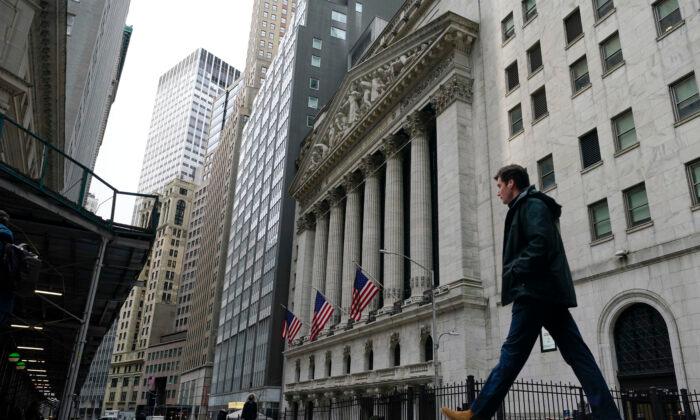European Central Bank (ECB) President Christine Lagarde seems even less aware than Federal Reserve (Fed) Chairman Jerome Powell. Both face pressure to deal with intense inflations—8.3 percent in the past year in the United States and 7.5 percent in the eurozone.
But since the necessary response risks recession, Powell has moved timidly, and Lagarde hasn’t moved at all. Their lack of conviction will likely cause both inflation and recession.
The Fed has only just edged onto an anti-inflationary heading. Policymakers there have begun to reverse their so-called “quantitative easing” program. Instead of buying securities directly on financial markets, they'll now sell the hoard of securities they previously amassed. They hope in this way to absorb inflationary liquidity from the economy. Fed policymakers have also made small steps toward raising interest rates, adding 0.75 percentage points to the target federal funds rate to bring it to 1 percent.
Other central banks, notably in Canada and New Zealand, have taken similar steps.
The ECB hasn’t even gone this far. Lagarde has talked about ending the bank’s quantitative easing program, perhaps in May, perhaps not until September. She stated that interest rate increases will wait until late this year, if then.
Lagarde has explained her lack of action by drawing two distinctions to the U.S. situation. Europe, she said, is less far along in its post-pandemic recovery than the United States, and its economy is much more vulnerable to the sanctions imposed on Russia. She’s correct about Europe’s situation, but she still runs great risks with Europe’s inflation.
In one context, Powell’s caution and Lagarde’s reluctance to do anything are easy to understand. No policymaker wants to impose the kind of restraint that might precipitate a recession. But unless they take the risk and move a lot further and a lot faster, neither has a chance of quelling the intensifying inflationary pressures confronting them.
Their timid postures might be justified if the inflation were, as some in authority have asserted, simply the transitory result of post-pandemic supply chain problems or the immediate consequence of the sanctions placed on Russia, but it isn’t. Although these considerations have contributed to inflationary pressures, today’s inflation has much deeper and more fundamental roots, making it stubborn and hard to quell.
The underlying problem stems from years of misguided fiscal and monetary policies. For over a decade now, governments on both sides of the Atlantic have pursued extremely stimulative fiscal postures that have created extremely wide budget deficits. Each continent has faced a succession of crises that seemed to require such policies at each stage, but the deficits have accumulated nonetheless.
Worse from an inflation standpoint, the authorities on both continents have used extremely expansive monetary policies to finance these fiscal policies. The Fed in the United States, for example, has used new money creation to purchase roughly $5 trillion in government debt during this time, $3 trillion in just the last couple of years. This is the modern equivalent of financing government by running the printing press—a classic prescription for inflation.
Against the staying power of this kind of inflationary pressure, central bank actions to date look weak, to say the least. Especially since inflation has had a chance to build a powerful momentum during the past year or so, Lagarde’s stated concern about undershooting Europe’s 2 percent inflation target sounds ridiculous. That’s certainly a long way below today’s 7.5 percent reality. More realistic thinking might consider how much restraint it will take for the ECB to quell such an embedded inflationary pressure.
Nor could a less aggressive monetary approach save Europe or the United States from recession. Left unchecked, inflation on its own would impose sufficient economic distortions to precipitate stagflation and ultimately an economic downturn.
The uncertainties engendered by inflation would, for example, stymie business investment in productive projects. Inflation would also divert what investment monies are available to inflation hedges—such as art and real estate speculation—away from productive, job-creating investments. Even if they could get wage hikes, workers would see a rising cost of living destroy the buying power of their incomes.
The ultimate downturn may take longer to develop than one resulting from monetary restraint. Still, it would arrive nonetheless and probably last longer and be more severe than anything risked by prompt and effective anti-inflationary monetary action.





